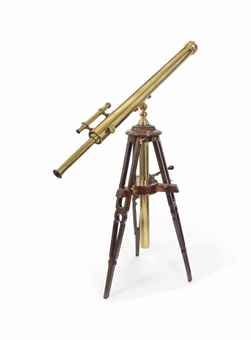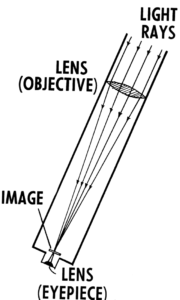
(Credit: Wikimedia Commons)
One of the most remarkable phenomenon to ever capture the imagination of the human mind over the course of history are those tiny, visible glimmers of light that appear in the night sky. As we know and did our distant ancestors, those lights appear static each night but will rotate around the Earth. Except a few of them, the planets – from the Greek word meaning wanderer – and the Moon moved about more quickly. People wondered: what exactly were these lights up there and what were they doing? Early astronomers grouped them as constellations. Early religious leaders evoked them as Gods. They did, after all, seem to possess special powers as their positions could predict certain times of the year, such as a harvest. Their ultimate mystery was shrouded in the fact that they seemed to be too far away. An instrument needed to bring them into sharper focus was needed explain them. In the early 17th century that instrument came into existence and changed forever how humans viewed their place in the universe.
A Convergence of Lenses and Optics
The optical effects of lens were known about in antiquity. Archeological evidence suggests that their use was abundant and spanned large geographical areas over several millennia. They were used for a variety of situations: reflect and refract light, for simple magnification, and even as optical illusions. Simultaneously characteristics of light were slowly being illuminated in antiquity. In the 2nd century the Greek scientist Ptolemy wrote about the properties of light in his treatise called Optics. The convergence in the knowledge of optics and lens would lead to the invention of the refracting telescope.
The first evidence for what later was to be called the telescope was the submission of a patent to the Dutch government in 1608 by Hans Lippershey, although it is likely that the idea was hit upon earlier by other lens makers. In any case, word of this new invention spread rapidly across Europe. One year following Lippershey’s patent Galileo Galilei improved on Lippershey’s design. He used it to make his momentous astronomical discoveries that he published in a short book called The Starry Messenger in 1610. Galileo’s observations through his telescope forever changed our view of the solar system.
Lippershey’s and Galileo’s telescope is called a refracting telescope since its lenses bend light rather than reflect it. A refracting telescope is constructed by using two convex lenses to bend light and form the image. It works by having what’s called an objective lens at one end of a long tube to gather light. The light is focused through the tube towards the lens at other end called an eyepiece, which magnifies and focuses the image on your eye. Galileo’s initial telescope had a magnification power of around 8x. This model was quickly improved to around 20x for the observations recorded in The Starry Messenger. The most powerful telescope he ever designed totaled a length of 3 feet 3 inches and magnified objects around 30x.
Technological improvements in magnification and clarity continued to accelerate in the decades to come, expanding the boundaries of the visible universe. While Galileo used concave lenses in this telescope, Johannes Kepler designed an improved telescope using two convex lens that allowed for a much larger field of view and caused less eye strain. However this approach inverted the image. Eventually Issac Newton decided it would be better to make a telescope from mirrors rather than lens, thus inventing the reflecting telescope. This type of telescope would prove to be superior to the refracting telescope and is the dominate telescope design in modern astronomy.
The Historic Impacts of the Telescope
The impacts of the telescope were immediate and immense. Observation with a telescope made clear that the universe was far, far larger than anybody had previously imagined. Those tiny, visible glimmers of light in the night sky that were once numbered in the hundreds are today numbered in the trillions. At the same time it removed humanity from its center and made our role in the cosmos feel much smaller. It removed the idea of perfection from the cosmos. Valleys and mountains could now be observed on the moon and planets, which were previously thought to be perfectly spherical.
Modern telescopes have far more capabilities than the telescopes of the 17th and 18th centuries. In addition to superior magnification they can detect heat, x-rays, radio waves and more. One day in this future the telescope maybe finally answer the question of whether or not we are alone in the universe.
Continue reading more about the exciting history of science!

